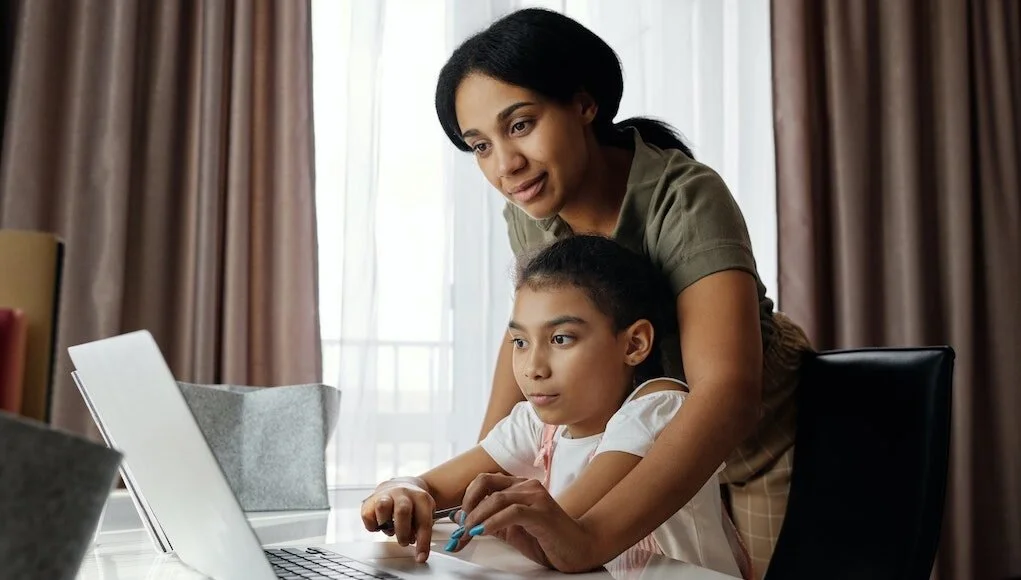5 Best Practices for Equitable Remote Learning
Schools across the nation were forced to suddenly move to virtual instruction last year, a shift that created difficulties for families, students, and staff. When stay-at-home orders went into effect and school buildings closed their doors, LEANLAB decided to put our traditional programming on hold, in order to support Kansas City area students with gaining access to the connectivity and technology necessary to participate in distance learning efforts. Our mission has always been to combat structural inequities that prevent access to quality learning opportunities through technology and innovation, so working to close the digital divide by increasing access to connectivity and technology was a natural fit.
We've learned a great deal about what it takes to provide effective, equitable virtual instruction while schools are closed. Below are five key takeaways about connectivity and virtual Instruction.
Understand Your Needs
In order to effectively plan for virtual instruction, you need to have an accurate understanding of the tech needs of your school population. This includes connectivity, devices, and other technology tools. Based on your school population, identify the best way to survey all students, families, and teachers about their tech and connectivity needs. This could look like a Google form that is sent out, calling families, or revisiting existing data.
At LEANLAB, we designed a bilingual survey instrument that schools could use to survey their student populations, though some schools opted to create their own surveys and report their own data. It is important to get a complete picture of what tech needs are beyond devices and connectivity, including aspects like tech literacy, assistive technology for students with special needs, and language and translation services.
Build Relationships with Key Partners
Once you have an understanding of your population’s needs, those needs should inform what partnerships you seek to establish. This work is complicated and crosses multiple sectors, and cannot be done in isolation, and, depending on the school system in question, IT capacity can vary greatly. Relationships could be built with private sector internet service providers, government authorities, or nonprofits that work on the digital divide or digital inclusion.
In Kansas City, we worked with school systems, public libraries, the city manager’s office, philanthropists, and local digital inclusion advocates to build the relationships necessary to carry out this work. It is important to think about cultivating long-term partnerships, as this is an issue that extends beyond the short-term emergency response to coronavirus. This could also involve funding partnerships that support the procurement of technology, connectivity solutions, and devices. Having these relationships in place ensures that the necessary personnel, supplies, and supports can be coordinated quickly and reliably in the event of future outbreaks or challenges.
Tech and Instruction Must Work Together
Once you have assessed your tech needs and built the relevant partnerships, those tech needs should inform your instructional plan. You don’t want to let the quality of education suffer while it is being delivered virtually, and you want to ensure that all students have access to quality learning opportunities regardless of the technology they have available.
Your instructional plan should be tailored to the ways in which students can participate. If you know that some students won’t have access to technology, consider how else they can get in touch with teachers, via phone or using paper packets. If you are planning on livestreaming lessons, ensure that students have sufficient internet bandwidth to stay connected. To maximize the quality of learning for all students, instruction must be responsive to the environment that students will be learning in, and that includes the technology landscape. Especially as virtual instruction becomes normalized, it is important to establish systems, routines, and procedures that ensure that the quality of instruction can be maintained even if it must be delivered and executed remotely.
Support Teachers
At LEANLAB, we conducted a teacher needs assessment to understand teachers’ biggest problems and learn how we could best support them. We found that the three most common challenges teachers encountered were related to connectivity, professional development around virtual instruction, and finding ways to meaningfully engage students in remote contexts.
Teachers are under a great deal of stress between managing their own emotions, dealing with the challenges of a pandemic, and worrying about their students and families. As the lead executors of virtual instruction, it is important that teachers feel supported and stable during this effort. Teachers need to be supported with technology, making sure they have devices at home and the internet access needed to facilitate learning. Teachers also need to have space and time for self-care, in addition to processing the ramifications of the pandemic. Additionally, consider policies and practices that support teachers who may be responsible for their own children, at-risk for the virus, or caring for someone who might be at-risk, like a more flexible PTO plan or coverage schedule. Additionally, teachers need professional development around how to use the tech tools that can facilitate virtual instruction, as well as development around what it looks like to effectively engage students remotely.
Virtual Learning Isn’t a Cure-All
As we begin trying out virtual education on a massive scale, there are some who herald virtual education as the future and a worthy substitute to traditional education. Though virtual education can reduce administrative and operational costs for schools and offers opportunities to personalize learning, research still points to the fact that low-income students from marginalized communities fare worse than their middle-class peers in virtual learning opportunities. Research also supports the idea that learning is a social process, and virtual instruction misses this important component of effective learning. Virtual learning can also exacerbate existing achievement gaps as it inherently privileges students with more resources at home, whether that looks like additional tutoring, more parental involvement, or access to learning supplements. Families with more resources are able to do more for their students when learning goes virtual than families with fewer resources.
The incidence of COVID-19 has shined a bright light on the role that technology, connectivity, and the digital divide play in contemporary education systems. As more and more school systems catch up to the 21st century, it is important that technology and virtual instruction opportunities are incorporated in a way that keeps equity front of mind so that all students have access to quality learning.










